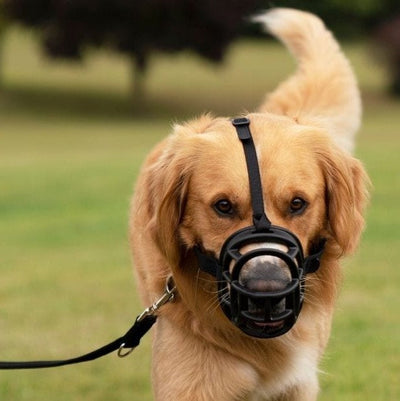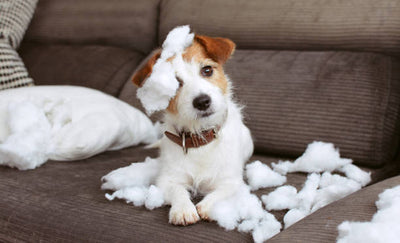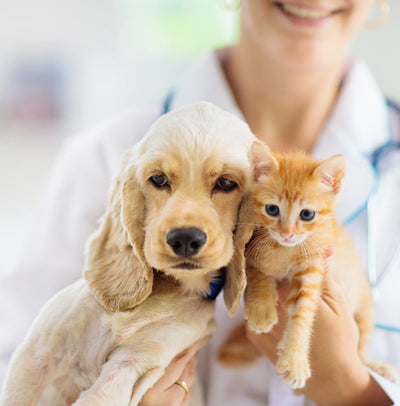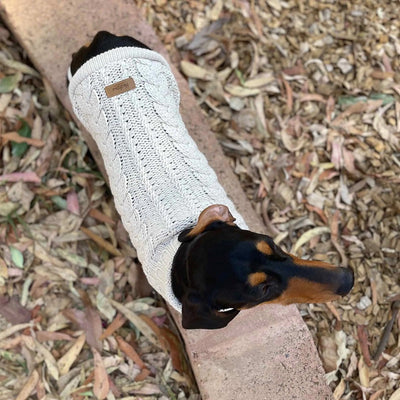
Are you tired of constantly cleaning up messes and dealing with accidents in your home? If you've recently welcomed a new furry friend into your family, then you know the struggle of puppy toilet training all too well. But fear not! With the right guidance and expert tips, you can bid farewell to those pesky accidents and create a clean and stress-free environment for both you and your pup. In this article, we will share invaluable insights from experienced trainers and dog experts to help you navigate the world of puppy toilet training with ease. From establishing a routine to understanding your puppy's cues, we'll cover all the essential strategies you need to know. So, say goodbye to those unwanted surprises and get ready to embark on a successful toilet training journey that will set the foundation for a lifetime of good habits for your furry companion.
The importance of puppy toilet training
Puppy toilet training is not just about maintaining a clean and odour-free home; it is also crucial for the overall well-being and happiness of your puppy. By teaching your puppy where and when to relieve themselves, you are instilling good habits that will benefit them throughout their life. Proper toilet training helps prevent accidents indoors, reduces the risk of your puppy developing behavioural issues, and strengthens the bond between you and your furry friend.
Toilet training is a fundamental aspect of responsible pet ownership, and it should be a top priority when bringing a new puppy home. By investing time and effort into this process, you are setting the stage for a harmonious coexistence with your four-legged companion. So, let's dive into the essential tips and products that will help you achieve effective puppy toilet training.
Understanding your puppy's needs
Before you can successfully toilet train your puppy, it's crucial to understand their needs and behaviours. Puppies have small bladders and limited bowel control, which means they need frequent opportunities to relieve themselves. On average, a puppy can hold their bladder for one hour for every month of age. For example, if your puppy is three months old, they can typically hold their bladder for up to three hours.
Additionally, puppies often need to relieve themselves shortly after eating, drinking, waking up from a nap, or engaging in vigorous play. It's essential to pay close attention to your puppy's body language and behaviour to identify when they need to go. Some common signs that your puppy needs to eliminate include restlessness, sniffing the ground, circling, or suddenly leaving the room. By being observant and proactive, you can anticipate their needs and prevent accidents before they happen.
Setting up a designated toilet area
 One of the first steps in puppy toilet training is establishing a designated toilet area. This helps create consistency and reinforces the association between the chosen spot and the act of elimination. Whether you choose to train your puppy to go outside or use indoor pee pads, having a specific location will make the training process more effective.
One of the first steps in puppy toilet training is establishing a designated toilet area. This helps create consistency and reinforces the association between the chosen spot and the act of elimination. Whether you choose to train your puppy to go outside or use indoor pee pads, having a specific location will make the training process more effective.
When selecting an outdoor toilet area, choose
choose 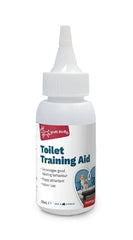 a spot that is easily accessible and away from high-traffic areas. The location should be safe, secure, and ideally have a surface that is easy to clean. If you opt for indoor pee pads, designate a specific area in your home where the pads will be placed consistently. This will help your puppy understand where they should go when they need to relieve themselves.
a spot that is easily accessible and away from high-traffic areas. The location should be safe, secure, and ideally have a surface that is easy to clean. If you opt for indoor pee pads, designate a specific area in your home where the pads will be placed consistently. This will help your puppy understand where they should go when they need to relieve themselves.
Establishing a consistent routine
Consistency is key when it comes to puppy toilet training. Establishing a routine not only helps your puppy understand when and where to go, but it also provides them with a sense of security and predictability. Create a schedule that includes regular feeding times, play sessions, and toilet breaks.
Start by taking your puppy to their designated toilet area first thing in the morning, as well as after meals, naps, playtime, and before bedtime. Use a brief cue word or phrase, such as "go potty" to help your puppy associate the command with the act of elimination. Be patient and give your puppy plenty of time to sniff around and find the right spot. When they eliminate in the designated area, praise them enthusiastically and offer a small treat as a reward. This positive reinforcement will reinforce the desired behaviour and help your puppy understand that they have done well.
Positive reinforcement techniques
Positive reinforcement is an effective and humane training method that focuses on rewarding desired behaviours rather than punishing unwanted ones. When it comes to toilet training, positive reinforcement plays a crucial role in shaping your puppy's behaviour and creating a positive association with the act of eliminating in the correct spot.
Whenever your puppy successfully eliminates in their designated toilet area, offer verbal praise and a tasty treat. The praise can be in the form of a cheerful tone of voice and phrases like "good job" or "well done." The treat should be something your puppy finds highly rewarding, such as small pieces of cooked chicken or commercial dog treats.
Avoid using punishment or scolding when accidents occur. Remember that puppies have limited bladder control and may not fully understand where they should go yet. Instead, focus on reinforcing the desired behaviour and redirecting your puppy to the correct spot when accidents happen. Consistency, patience, and positive reinforcement will go a long way in helping your puppy learn and develop good toilet habits.
Essential Toilet Training Products for Dogs and Puppies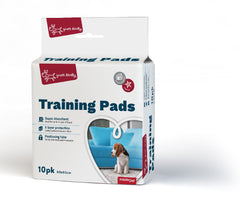
- Puppy training pads (odour absorbing)
- Treats
- Enzyme based cleaning products
- Toileting attractant

Common mistakes to avoid during toilet training
Toilet training can sometimes be challenging, especially if you're unfamiliar with the process or encounter common mistakes. By being aware of these pitfalls, you can avoid them and ensure a smoother training experience for both you and your puppy.
One common mistake is punishing your puppy for accidents that happen indoors. As mentioned earlier, accidents are a normal part of the toilet training process, and scolding or punishing your puppy will only create fear and anxiety. Instead, focus on reinforcing the desired behaviour and redirecting your puppy to the correct spot.
Another mistake is not being consistent with the designated toilet area or the training routine. Changing the location or using different methods can confuse your puppy and prolong the training process. Stick to your chosen strategy and be consistent in your approach.
Dealing with accidents and cleaning up properly
 Accidents are bound to happen during the toilet training process, so it's important to be prepared and know how to handle them effectively. When you catch your puppy in the act of eliminating in the wrong spot, calmly interrupt them by saying a sharp "no" or using a cue word like "outside." Then, quickly but gently pick them up and move them to the designated toilet area. This helps your puppy understand where they should go and reinforces the correct behaviour.
Accidents are bound to happen during the toilet training process, so it's important to be prepared and know how to handle them effectively. When you catch your puppy in the act of eliminating in the wrong spot, calmly interrupt them by saying a sharp "no" or using a cue word like "outside." Then, quickly but gently pick them up and move them to the designated toilet area. This helps your puppy understand where they should go and reinforces the correct behaviour.
When accidents occur, it's crucial to clean up properly to eliminate odours and prevent repeat incidents. Use an enzymatic cleaner specifically designed for pet accidents to remove any traces of urine or feces. Avoid using ammonia-based cleaners, as they can actually attract your puppy to the same spot again.
Read Our 7 top tips for removing pet urine smells and stains to learn how to clean up pet urine and prevent your dog from re-marking in the same spot.
Gradually transitioning to outdoor toileting
If your goal is to have your puppy eliminate outdoors, it's important to gradually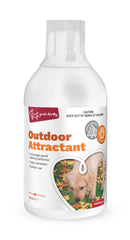 transition from indoor pee pads or other designated areas. As your puppy becomes more reliable in using the designated spot, start moving the pee pads or gradually
transition from indoor pee pads or other designated areas. As your puppy becomes more reliable in using the designated spot, start moving the pee pads or gradually  reduce their size. There are some products available to make this transition an easy process. They are known as outdoor toileting attractants and are an effective tool when it comes to toilet training. Eventually, your puppy will associate the act of elimination with being outside and will naturally gravitate towards that behaviour.
reduce their size. There are some products available to make this transition an easy process. They are known as outdoor toileting attractants and are an effective tool when it comes to toilet training. Eventually, your puppy will associate the act of elimination with being outside and will naturally gravitate towards that behaviour.
When transitioning to outdoor toileting, take your puppy to the designated outdoor area on a leash. Use the same cue word or phrase you've been using during the indoor training sessions. Be patient and wait for your puppy to eliminate. When they do, reward them with praise and treats. Over time, your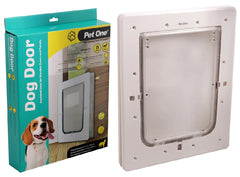 puppy will learn to associate eliminating outdoors with positive rewards and will continue to do so on their own.
puppy will learn to associate eliminating outdoors with positive rewards and will continue to do so on their own.
In the longer term, to assist with good toilet training habits you could consider installing a pet door.
Troubleshooting difficult cases
In some cases, toilet training may not progress as smoothly as expected, and you may encounter challenges along the way. It's important to remain patient and persistent, as every puppy learns at their own pace. Most pups tend to have these skills mastered by around 13 weeks, remember that this is an ongoing process and you should expect some mishaps. However, if you're facing persistent difficulties or your puppy is having frequent accidents, it may be helpful to consult a professional dog trainer or a veterinarian. They can provide personalised guidance and advice tailored to your specific situation.
Celebrating success and maintaining good habits
As your puppy becomes more reliable with their toilet training, it's important to celebrate their successes and maintain good habits. Continue to offer verbal praise and rewards when your puppy eliminates in the designated area. Gradually reduce the frequency of treats but maintain verbal praise to reinforce the positive behaviour.
It's also essential to maintain a consistent routine even after your puppy is fully toilet trained. Dogs thrive on routines, and having a predictable schedule will help prevent accidents in the future. Stick to regular feeding times, play sessions, and toilet breaks to ensure your puppy's continued success.
Puppy toilet training may require time, patience, and consistency, but the effort is well worth it. By understanding your puppy's needs, setting up a designated toilet area, establishing a consistent routine, using positive reinforcement techniques, and avoiding common mistakes, you can achieve effective toilet training. Remember to be patient and understanding, as accidents are a normal part of the process. With the right approach and plenty of praise, you can create a clean and stress-free environment for both you and your furry companion. So, say goodbye to accidents and hello to a lifetime of good habits for your puppy.
© weknowpets 2023


